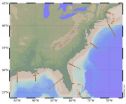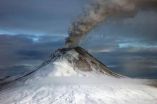(Press-News.org) Los Angeles, CA (March 01, 2013). In a 2012 report, the Obama administration announced that it was "jumpstarting" the nuclear industry. Because of the industry's long history of permitting problems, cost overruns, and construction delays, financial markets have been wary of backing new nuclear construction for decades. The supposed "nuclear renaissance" ballyhooed in the first decade of this century never materialized. And then came Fukushima, a disaster that pushed countries around the world to ask: Should nuclear power be part of the energy future? In the third and final issue in a series focused on nuclear exits, the Bulletin of the Atomic Scientists, published by SAGE, turns its attention to the United States and looks at whether the country's business-as-usual approach may yet lead to a nuclear phase-out for economic reasons.
The Obama administration injected significant funding into two new nuclear reactor projects in Georgia in 2012. But this investment—the first of its kind in three decades—belies an overall dismal US nuclear power landscape. Where Japan and many European countries responded to the Fukushima disaster with public debate and significant policy shifts in the nuclear arena, the US has scarcely broached the subject. According to former Nuclear Regulatory Commission Commissioner Peter Bradford, current market forces challenge the economic viability of existing nuclear power plants, with new reactors representing an extremely unattractive investment prospect.
Allowing existing reactors to simply run out their licensed lifetimes in the current scenario, nuclear power may simply disappear, he writes. "Absent an extremely large injection of government funding or further life extensions, the reactors currently operating are going to end their licensed lifetimes between now and the late 2050s," Bradford concludes. "They will become part of an economics-driven US nuclear phase-out a couple of decades behind the government-led nuclear exit in Germany."
Also in this special issue, Sharon Squassoni, a non-proliferation expert at the Center for Strategic and International Studies in Washington, DC, writes that a US nuclear phase out will have only minor international implications. Governmental attempts to buoy the US commercial nuclear industry for national security reasons run the risk of blurring the distinction between civilian and military nuclear programs, undermining public backing for both, she adds.
The Bulletin canvassed opinion on the economic and environmental implications of a US phase from leading institutions. Massachusetts Institute of Technology (MIT) experts Henry D. Jacoby and Sergey Paltsev modeled a number of scenarios, focusing particularly on the effects of greenhouse gas regulations. They also looked at the impacts of a nuclear phase out on greenhouse gas emissions, electricity prices, and the national economy. They conclude that a US exit from nuclear power would impose costs on all three.
Colorado-based Rocky Mountain Institute chairman and chief scientist, Amory Lovins, says that as the US electricity system ages, most of its power plants and transmission grid must be replaced by 2050. The cost will be roughly the same, whether the rebuilt system is fed by new nuclear power plants and "clean coal" facilities or centralized and distributed renewable energy plants: "The inevitable US nuclear phase-out, whatever its speed, is […] just part of a far broader and deeper evolution from the remarkable electricity system that has served the nation so well to an even better successor now being created," he writes.
The earlier issues in this Nuclear Exit series looked at neighbors France and Germany. Germany is a trailblazer for countries considering an exit from commercial nuclear power, embarking on an ambitious Energiewende, or energy turnaround, that includes a quick nuclear phase-out and an enthusiastic embrace of renewable energy. Just next door, France is taking a more cautious approach, and is currently carrying out an extensive, multi-stakeholder debate on the country's energy future. With three-quarters of France's electricity derived from nuclear power, a rapid or total exit seems unlikely.
The breadth and depth of the data and analysis presented by the authors in all three Nuclear Exit issues make clear that this question has no simple, one-size-fits-all answer. They make something else clear: The question deserves a serious, considered answer in every country with a commercial nuclear power industry.
###
"The US Nuclear Exit" by John Mecklin published 01 March 2013 in the Bulletin of the Atomic Scientists.
"How to close the US nuclear industry: Do nothing "by Peter. A. Bradford published 01 March 2013 in the Bulletin of the Atomic Scientists.
"The economics of a US civilian nuclear phase-out" by Amory b. Lovins published 01 March 2013 in the Bulletin of the Atomic Scientists.
"The limited national security implications of civilian nuclear decline" by Sharon Squassoni published 01 March 2013 in the Bulletin of the Atomic Scientists.
Select articles from the issue will be free to access from a limited time here: http://bos.sagepub.com/
The Bulletin of the Atomic Scientists informs the public about threats to the survival and development of humanity from nuclear weapons, climate change, and emerging technologies in the life sciences. The Bulletin was established in 1945 by scientists, engineers, and other experts who had created the atomic bomb as part of the Manhattan Project. http://bos.sagepub.com.
SAGE is a leading international publisher of journals, books, and electronic media for academic, educational, and professional markets. Since 1965, SAGE has helped inform and educate a global community of scholars, practitioners, researchers, and students spanning a wide range of subject areas including business, humanities, social sciences, and science, technology, and medicine. An independent company, SAGE has principal offices in Los Angeles, London, New Delhi, Singapore and Washington DC. www.sagepublications.com END
Quality is a central component of any discussion around health care and one of the key dimensions and measurements of quality care is the patient experience. However, many healthcare organizations struggle to become 'patient focused' and fail to score well on patient satisfaction surveys. New research from Brigham and Women's Hospital, published in the March edition of British Medical Journal Quality and Safety, offers a potential explanation -- insufficient support from hospital management to improve the patient experience by engaging physicians and nurses in the process.
"Twelve ...
A continental-scale chemical survey in the waters of the eastern U.S. and Gulf of Mexico is helping researchers determine how distinct bodies of water will resist changes in acidity. The study, which measures varying levels of carbon dioxide (CO2) and other forms of carbon in the ocean, was conducted by scientists from 11 institutions across the U.S. and was published in the journal Limnology and Oceanography.
"Before now, we haven't had a very clear picture of acidification status on the east coast of the U.S.," says Zhaohui 'Aleck' Wang, the study's lead author and ...
Alexandria, VA – The American Geosciences Institute (AGI) and American Geophysical Union (AGU) have released a recording of the latest AGU/AGI Heads and Chairs webinar. This month's session focuses on legal issues related to field trips and field courses. The webinar, led by panelists David Mogk from Montana State University and Steven Whitmeyer from James Madison University, serves as a guide for reducing risk and liability for geoscience departments, and reviews tips for properly planning a safe and enjoyable field trip.
Although field work is acknowledged as an integral ...
Research now reveals that fish can migrate to avoid the threat of being eaten. A new study from Lund University in Sweden shows that roach fish leave lakes and move into surrounding streams or wetlands, where they are safer from predators.
Every year, millions of animals migrate worldwide. In most cases, this is due to a shortage of food or other environmental factors. However, few research studies have focused on migration as a strategy to avoid predators. It is not easy to measure and quantify the risk of an animal being eaten.
"Our findings are therefore quite unique", ...
Scientists at the Universities of Liverpool have found evidence of an ancient micro-continent buried beneath the Indian Ocean.
The ancient continent extends more than 1500 km in length from the Seychelles to the island of Mauritius and contains rocks as old as 2,000 million years, much older than the Indian Ocean which has formed only in the last 165 million years.
The research team believe that this micro-continent, which they have named Mauritia, was split off from Madagascar and India between 61 and 83 million years ago as one single land mass rifted apart to ...
Researchers from Ludwig-Maximilians-Universitaet (LMU) in Munich identify a novel signal transduction pathway, which activates the parkin gene and prevents stress-induced neuronal cell death.
Parkinson's disease is the most common movement disorder and the second most common neurodegenerative disease after Alzheimer's disease. It is characterized by the loss of dopamin-producing neurons in the substantia nigra, a region in the midbrain, which is implicated in motor control. The typical clinical signs include resting tremor, muscle rigidity, slowness of movements, and ...
March 1, 2013 - Even in the face of a disaster, we remain optimistic about our chances of injury compared to others, according to a new study. Residents of a town struck by a tornado thought their risk of injury from a future tornado was lower than that of peers, both a month and a year after the destructive twister. Such optimism could undermine efforts toward emergency preparedness.
After an F-2 tornado struck his town in Iowa, Jerry Suls, a psychologist at the University of Iowa who studies social comparison, turned his attention to risk perception. "I had dinner as ...
This press release is available in German.
The computer is increasingly used to help in complex situations. The latest innovations in this area will be presented by Karlsruhe Institute of Technology (KIT) and the FZI Research Center for Information Technology at the CeBIT in early March (hall 9, stand G33). User-friendly systems display all facts to surgeons during operation and simultaneously translate university lectures for foreign students. In addition, smart living environments that support comfort, safety, and care services and software for the relocation of ...
The term "big data" is defined as a huge amount of digital information, so big and so complex that normal database technology cannot process it. It is not only scientific institutes like the nuclear research center CERN that often store huge amounts of data ("Big Data"). Companies like Google and Facebook do this as well, and analyze it to make better strategic decisions for their business. How successful such an attempt can be was shown in a New York Times article published last year. It reported on the US-based company "Target" which, by analyzing the buying patterns ...
A team led by the University of Colorado Boulder looking for clues about why Earth did not warm as much as scientists expected between 2000 and 2010 now thinks the culprits are hiding in plain sight -- dozens of volcanoes spewing sulfur dioxide.
The study results essentially exonerate Asia, including India and China, two countries that are estimated to have increased their industrial sulfur dioxide emissions by about 60 percent from 2000 to 2010 through coal burning, said lead study author Ryan Neely, who led the research as part of his CU-Boulder doctoral thesis. Small ...



